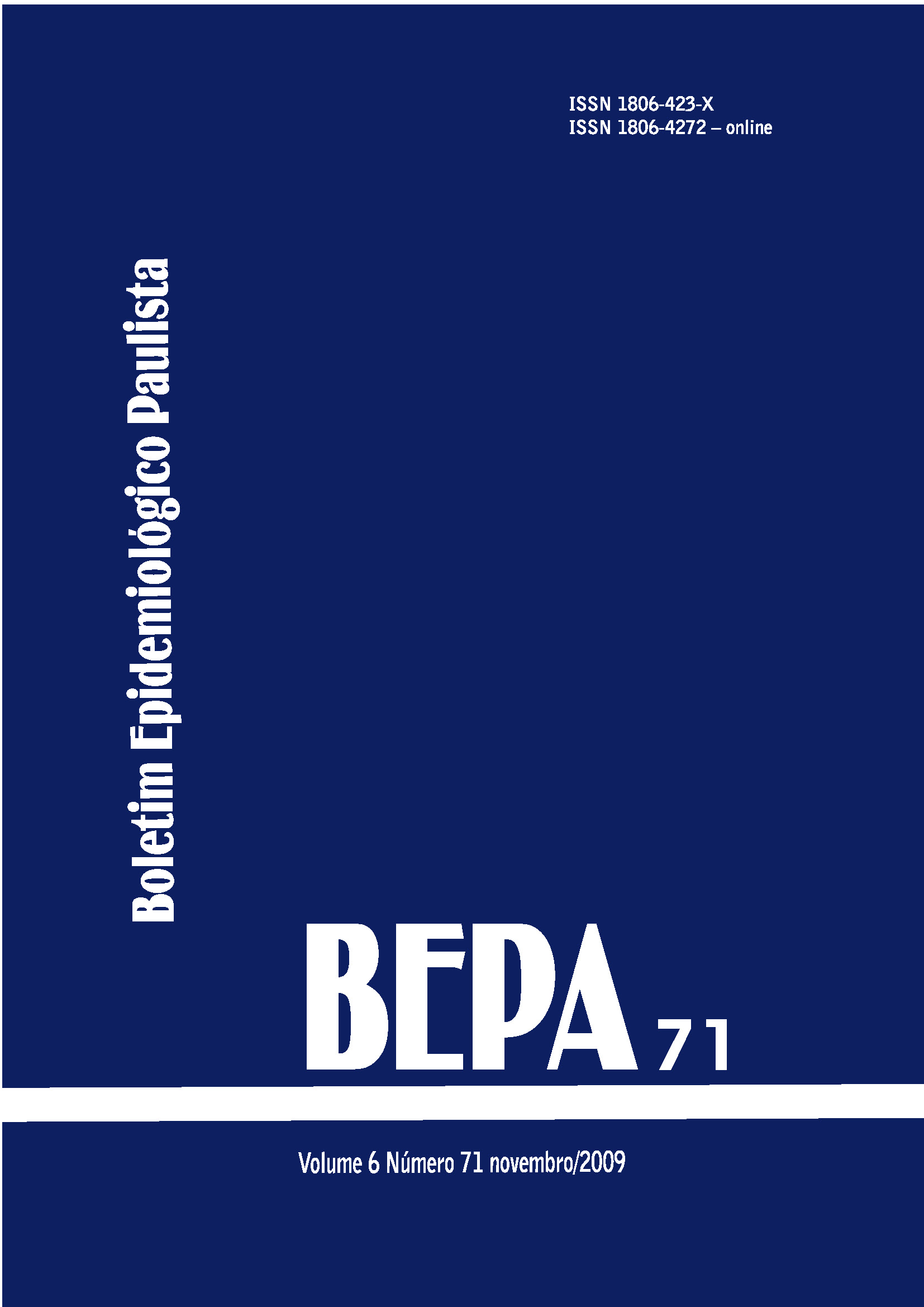Abstract
The rabies virus can be present in different tissues and organs, so it makes possible its replication in a wide variety of cells cultures. Because of the critical importance of virus production in vitro to achievement of diagnostic tests, production of hyperimmune sera and researches, the aim of this study was evaluate the viral replication of strains PV (Pasteur Virus) and CVS (Challenge Virus Standard) in cells lines BHK-21 (Baby Hamster Kidney). The cells were infected with strains PV and CVS and cultivated on stationary cell culture flasks and on microplates with cover glass slides on 37°C until 96 hours. Every 3 hours aliquots of supernatant were collected of the flasks for monitoring the virus particles concentration and glass cover to evaluate viral infection in cells. The evaluations were performed by direct immunofluorescence, to determinate the higher dilution that the viral suspensions infected 100% of the BHK-21 confluent monolayer and to evaluate the increase of fluorescence intensity, express by crosses (+ to ++++), identifying the viral antigen demonstrated by photos. The presence of viral particles was observed from 9 hours post-infection with both strains. The viral particles of CVS and PV strains on supernatant were obtained from 15 and 18 hours of incubation, respectively and the higher concentration of particles on viral suspensions was observed 72 hours post-infection. Therefore, the protocol used demonstrated efficiency independent of viral strain used allowing the obtaining of good titers in viral suspensions produced.
References
King AA. Cell culture of rabies virus. In: Meslin F-X, Kaplan MM, Koprowski H. Laboratory techniques in rabies. 4. ed. Genebra: World Health Organization; 1996. p. 114-30.
Fenje P. A rabies vaccine from hamster kidney tissue cultures: preparation and evaluation in animals. Can J Microbiol. 1960;6:605-9.
Lin F, Zeng F, Lu L, Lu X, Zen R, Yu Y, et al. The primary hamster kidney cell rabies vaccine: adaptation of viral strain, production of vaccine, and pre and postexposure treatment. J Infect Dis. 1983;147:467-73.
Atanasiu P, Tsiang H, Gamet A. A new rabies vaccine for human use prepared in primary tissue culture. Ann Inst Pasteur: Microbiol. 1974;125B:419-32.
Steenis GV, Wezel ALV, Hannik CHA, Marel PVD, Osterhaus ADME, Groot IGM, et al. Immunogenicity of dog kidney cell rabies vaccine (DKCV). In: Kuwert E, Merieux C, Koprowski H, Bogel K, editores. Rabies in the tropics. Berlin, Springer-Verlag. 1985. p. 172-80.
Clark HF. Systems for assay and growth of rhabdovirus. In: Bishop DHL, editor. Rhabdoviruses. Boca Raton: CRC Press; 1979. p. 23-41.
Clark HF. Rabies serogroup viruses in neuroblastoma cells: propagation, “autointerference” and apparently random back-mutation of attenuated viruses to the virulent state. Infect Imm. 1980;27:1012-22.
Iwasaki T, Clark HF. Rabies virus infection in mouse neuroblasmoma cells. Lab Invest. 1977;36:578-84.
Tsiang H. An in vitro study of rabies pathogenesis. Bull Inst Pasteur. 1985;83:41-56.
Montagnon, BJ, Fournier P, Vicent-Falquet JC. Un nouveau vaccine antirabique à usage humain: rappott préliminaire. [A new rabies vaccine for human use: preliminary report.] In: Kuwert E, editor. Rabies in the tropics. Berlin: Springer-Verlag; 1985. p. 138-43.
Bordignon J, Piza AT, Silva MA, Caporale GMM, Carrieri ML, Kotait I, Zanetti CR. Isolation and replication of Rabies Virus in C6 Rat Glioma Cells (Clone CCl107). Biologicals . 2001;29:67-73.
MacPherson I, Stoker M. Polyoma transformation of hamster cell clones-an investigation of genetic factores affecting cell competence. Virology. 1962;16:147-51.
Wiktor TJ, Clark HF. Growth of rabies virus in cell culture. In: Baer GM. The natural history of rabies. New York: Academic Press; 1975. p. 155-79.
Rudd RJ, Trimarchi CV, Abelseth MK. Tissue culture technique for routine isolation of street strain rabies virus. J Clin Microbiol. 1980;12:590-3.
Smith JS, Yacer PA, Baer GM. A rapid reproducible test for determining rabies neutralizing antibody. Bull WId Hlth Org. 1973;48:535-41.
Zalan E, Wilson C, Pukitis D. A microtest for quantitation of rabies virus neutralizing antibodies. J Biol Stand. 1979;7:213-20.
Favoretto SR, Carrieri ML, Tino MS, Zanetti CR, Pereira OAC. Simplified fluorescent inhibition microtest for the rabies neutralizing antibodies. Rev Inst Med Trop S Paulo. 1993;35(2):171-5.
Caporale GMM, Silva ACR, Peixoto ZMP, Chaves LB, Carrieri ML, Vassão RC. First production of fluorescent anti-ribonucleoproteins conjugate f or diagnostic of rabies in Brazil. J Clin Lab Anal. 2009;23:7-13.
Schneider LG. Concentration and purification. In: Baer GM. The natural history of rabies. New York: Academic Press; 1975. p.125-40.

This work is licensed under a Creative Commons Attribution 4.0 International License.
Copyright (c) 2009 Alexandre Mendes Batista, Paula Sônia Cruz, Eliana de Almeida, Ana Elena Boamorte da Costa, Karin Corrêa Scheffer, Luciana Botelho Chaves, Andréa de Cássia Rodrigues da Silva, Graciane Maria Medeiros Caporale
